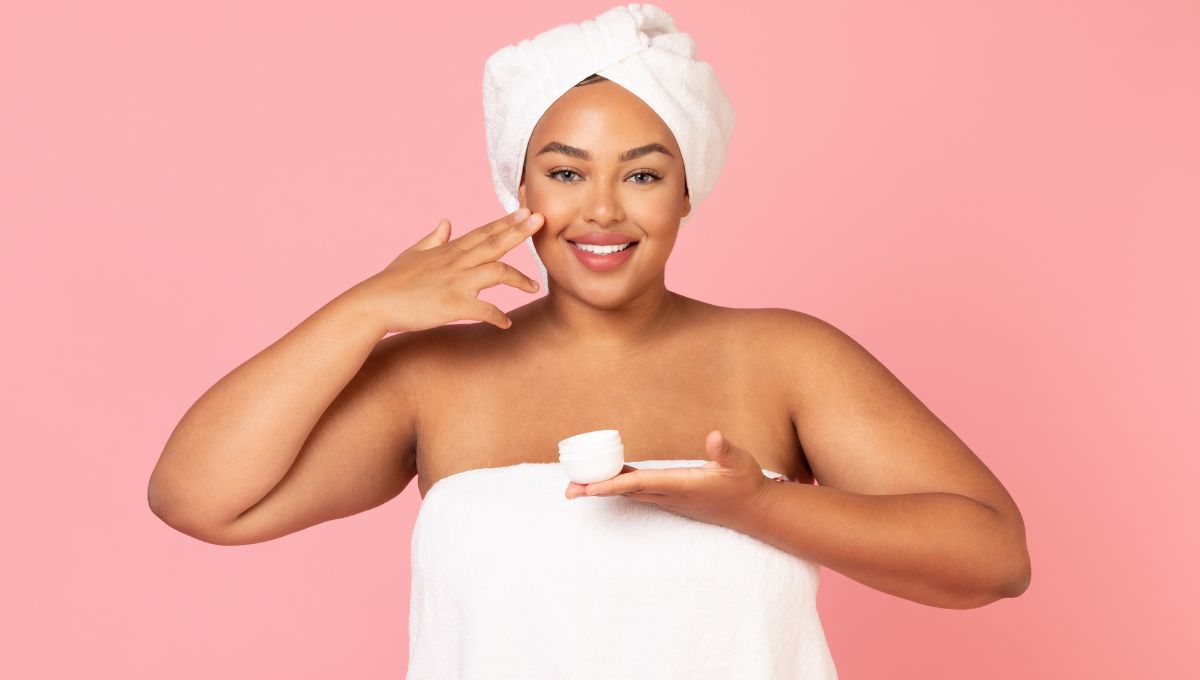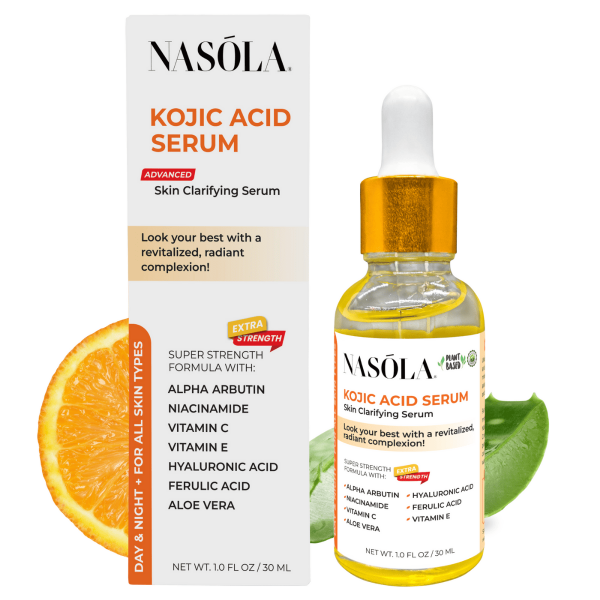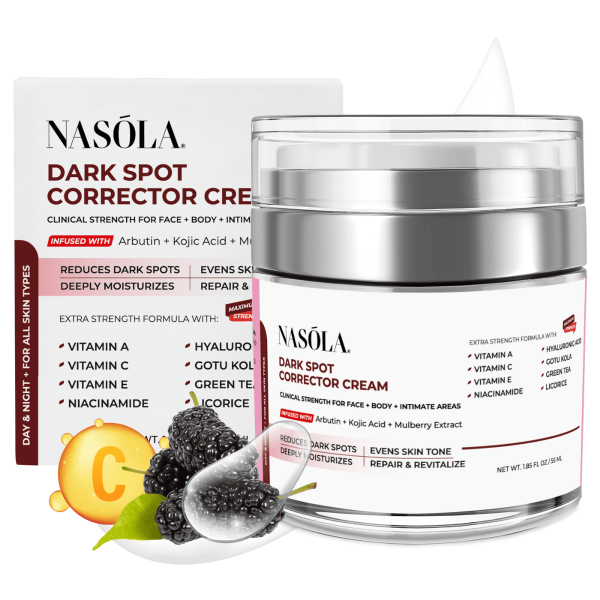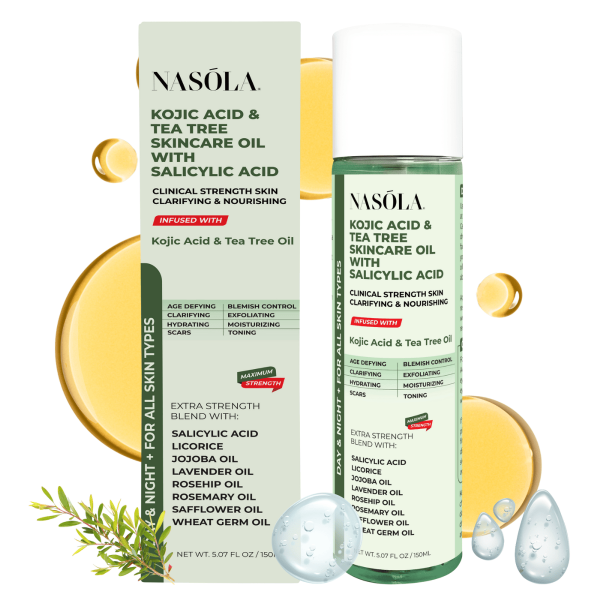Picture this.
You finally beat that stubborn breakout that’s been camping on your chin for weeks. Relief, right?
But now… you’re left with a dark reminder. A patchy mark that just won’t go away. You touch it a dozen times a day hoping it fades faster.
If you’re wondering how to lighten acne scars naturally and effectively — you’re not alone. It’s one of the most common questions in skincare, and it affects all skin tones, textures, and types.
Those leftover reminders from previous breakouts often appear in different forms: post-inflammatory hyperpigmentation (those flat, dark spots), atrophic scars (the little dips or divots), or raised bumpy scars that feel like tiny hills.
The good news?
With targeted skincare and patience (and let’s be real — that last one is hard), you can visibly fade scars and get your radiant skin back.
Products like the Nasola Kojic Acid Cream, Nasola Dark Spot Corrector Cream, Nasola Kojic Acid Tea Tree Skincare Bio Oil, and Nasola Kojic Acid Serum are powerful allies on this journey.
So let’s get into it—let’s get scar-smart.
- How to Lighten Acne Scars: Proven Strategies for Clearer Skin
- The Role of Tea Tree Oil and Salicylic Acid in Acne Scar Lightening
- Kojic Acid Serum: A Lightweight Solution for Acne Scar Lightening
- Daily Moisturization and Skin Renewal for Scar Fading
- Unique Skin Types and How to Lighten Acne Scars Accordingly
- Ingredient Spotlight: Kojic Acid for Acne Scars
- Skin Care Lifestyle Tips to Complement Products and Lighten Acne Scars
- Bonus: How to Lighten Acne Scars Fast Before an Event
- Conclusion
How to Lighten Acne Scars: Proven Strategies for Clearer Skin
Understanding how to lighten acne scars begins with understanding why they show up in the first place — and how you can stop them from overstaying their welcome.
Acne scars aren’t just cosmetic; they’re your skin’s SOS from past inflammation. Whenever acne strikes, your skin sends white blood cells to heal — but sometimes this healing leaves excess pigment or uneven texture. That’s where the real work begins.
Actively treating scars sooner rather than later helps prevent them from becoming long-term residents.
Why Acne Scars Form and How to Treat Them Proactively
When your body heals acne, it fires up melanin production. Overproduction = dark spots, especially for deeper skin tones. Treatment is about aiding your skin’s natural renewal cycle while calming that inflammation.
Your most effective tools?
- Daily sunscreen (SPF is non-negotiable!).
- Skin-brightening agents like kojic acid.
- Anti-inflammatory ingredients like tea tree oil.
- Consistent moisturizing to support the barrier.
By starting early — even when acne is healing — you can interrupt the scar-forming cycle.
The Power of Kojic Acid in Fading Acne Scars
Kojic Acid naturally reduces melanin formation by inhibiting the tyrosinase enzyme. It works beautifully on pigmentation — and it’s more gentle than many harsh acids or peels.
Products like the Nasola Kojic Acid Cream are packed with this powerhouse. It’s lightweight, absorbs fast, and also hydrates the skin, which is super important when treating pigment issues. Moisturized skin always heals better.
Pair it with daily SPF, and you’re on the fast track to clean, glowing skin.
The Role of Tea Tree Oil and Salicylic Acid in Acne Scar Lightening
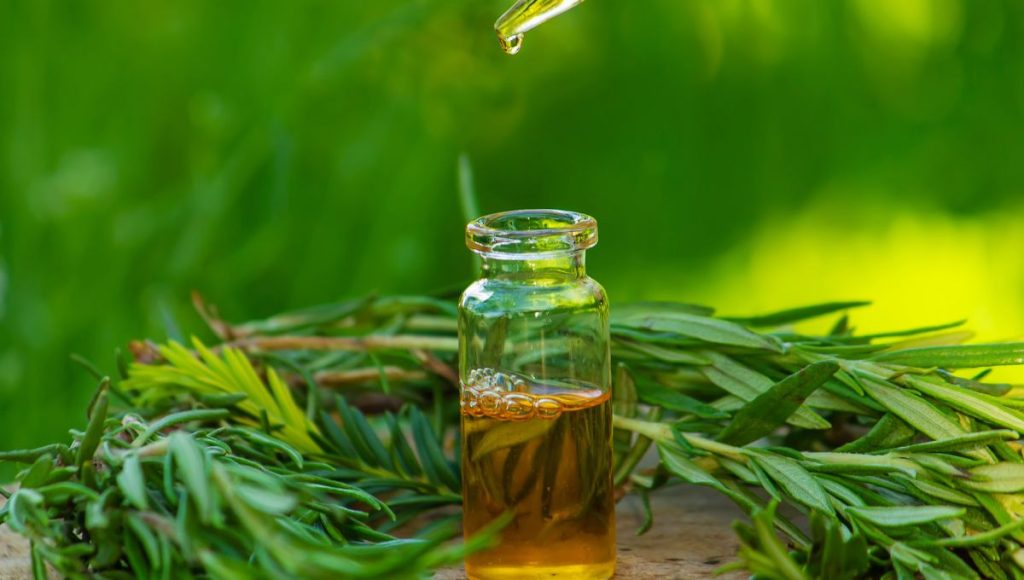
Let’s talk two underrated heroes: Tea Tree Oil and Salicylic Acid. Each one punches above its weight when it comes to acne scars — especially when used together. These ingredients tackle both what caused your acne in the first place and what’s left behind.
Used correctly, they can minimize scars faster by treating the root causes.
How Tea Tree Oil Combats Acne-Causing Bacteria and Inflammation
Tea Tree Oil is basically nature’s answer to blemish control without the nasty sting. It’s antimicrobial, meaning it neutralizes acne-causing bacteria on the skin.
When scars are forming post-acne, inflammation can still be lingering under the surface. Tea tree steps in to calm things down, reduce swelling and prevent future pimples from popping up near healing spots.
If you don’t want your scars spreading or worsening — stay calm. Literally.
The Nasola Kojic Acid Tea Tree Skincare Bio Oil with Salicylic Acid blends the skin-purifying effect of Tea Tree with the brightening benefits of Kojic Acid — plus nourishing plant oils to soothe and restore your moisture barrier.
How Salicylic Acid Exfoliates and Regenerates Skin Texture
Okay — Salicylic Acid. It’s a beta-hydroxy acid (BHA), and it LOVES oily, congested pores.
It goes beneath the surface to dissolve dead skin cells and oil buildup, helping to refine pores and polish away dullness. Think of it as a broom that gently clears the path for brighter skin.
Plus, it aids cell turnover — which is essential when trying to repair uneven texture and tone.
The brilliance of the Nasola Kojic Acid Tea Tree Skincare Bio Oil with Salicylic Acid lies in giving you this pore-clearing power without stripping your skin. Hello glow, goodbye damage.
Kojic Acid Serum: A Lightweight Solution for Acne Scar Lightening
Some skin — especially oily or acne-prone types — can’t handle rich creams. They need lightweight but powerful options that don’t clog pores. That’s where serums shine. They’re specifically made to sink deep and work below the surface.
A Kojic Acid serum can be a stealth weapon in your fight against hyperpigmentation.
How Serums Penetrate More Effectively Than Creams
Serums are designed with smaller molecule formulations than creams. Translation? They slip through the skin’s layers like a whisper, carrying active ingredients with zero bulk.
If you’ve ever felt like your heavier moisturizers weren’t “doing enough,” it’s probably because you needed something that gets in deeper.
That’s why layering a fast-absorbing serum underneath your cream or sunscreen lets you treat AND protect at once.
Benefits of Using Nasola Kojic Acid Serum in Your Routine
The Nasola Kojic Acid Serum is smooth, gentle, and super effective for acne spot fading.
Perfect for oily or breakout-prone skin, it targets over-pigmented areas while leaving you feeling weightless. It’s especially ideal for daytime use, layered under SPF.
Use it twice a day for maximum brightness, and always — ALWAYS — follow with sunscreen. This isn’t optional.
Use it consistently and your mirror will thank you.
Daily Moisturization and Skin Renewal for Scar Fading
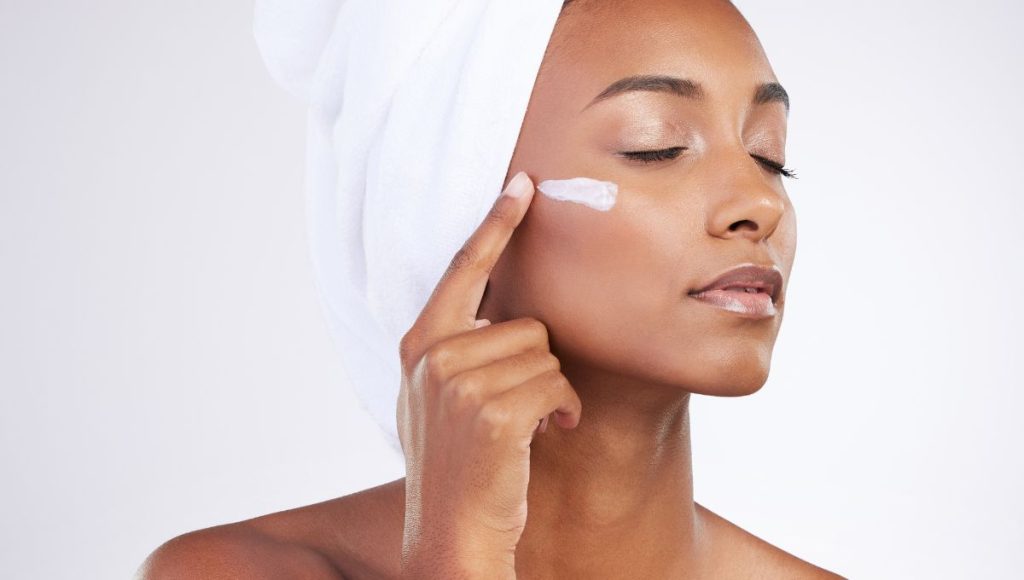
Hydrated skin looks better — yes. But that’s just the start. Moisture is essential to healing scars because dry or stripped skin can’t regenerate properly.
A strong, hydrated barrier can keep inflammation in check, which means your hyperpigmentation fades faster.
Importance of Consistent Skin Hydration in Scar Recovery
Dry skin sends your body into overproduction mode — which leads to more oil, more breakouts, and slowed cell turnover. Not the vibe.
Daily hydration:
- Repairs your skin barrier
- Minimizes transepidermal water loss (TEWL)
- Prevents further acne
- Boosts the effectiveness of your targeted treatment
Regardless of your skin type, moisture should be non-negotiable.
Brighten and Clear Hyperpigmentation with Nasola Dark Spot Corrector Cream
The Nasola Dark Spot Corrector Cream is your glow-up-in-a-jar.
Infused with brightening botanicals and gentle actives, it improves discoloration across face and body. Whether it’s facial marks or underarm discoloration, this formula blends in effortlessly and works hard while nourishing deeply.
If your skin feels dry, dull, or just ‘meh’, this cream will reset it fast — while helping reduce visible signs of acne scarring.
Unique Skin Types and How to Lighten Acne Scars Accordingly
Not all skin is created the same, so the way we treat scars should reflect that. Some of us are dry and flaky, some oily and reactive, others combo all-over. And let’s not forget the vast spectrum of melanin-rich skin — which brings added nuance to scar care.
Addressing Acne Scars on Oily vs. Dry Skin
Different needs, same goal: glowy, even skin.
- Oily skin? Stick to lightweight formulas like the Nasola Kojic Acid Serum that won’t congest your pores.
- Dry skin? Reach for a combo of Nasola Kojic Acid Cream and Nasola Kojic Acid Tea Tree Skincare Bio Oil to repair hydration while fading spots.
Adapt based on your skin’s mood.
How Ethnic Skin Tones Should Approach Fading Acne Scars
Hyperpigmentation tends to be more persistent in deeper skin tones. It’s also easier to irritate — and can worsen if triggered.
So how do you lighten scars wisely?
Gentle daily use of Nasola Kojic Acid Cream can reduce discoloration overtime, while the Nasola Dark Spot Corrector Cream works well on body areas like underarms or chest.
Alternating products, staying hydrated, and daily sun protection is essential for long-term fading.
Ingredient Spotlight: Kojic Acid for Acne Scars
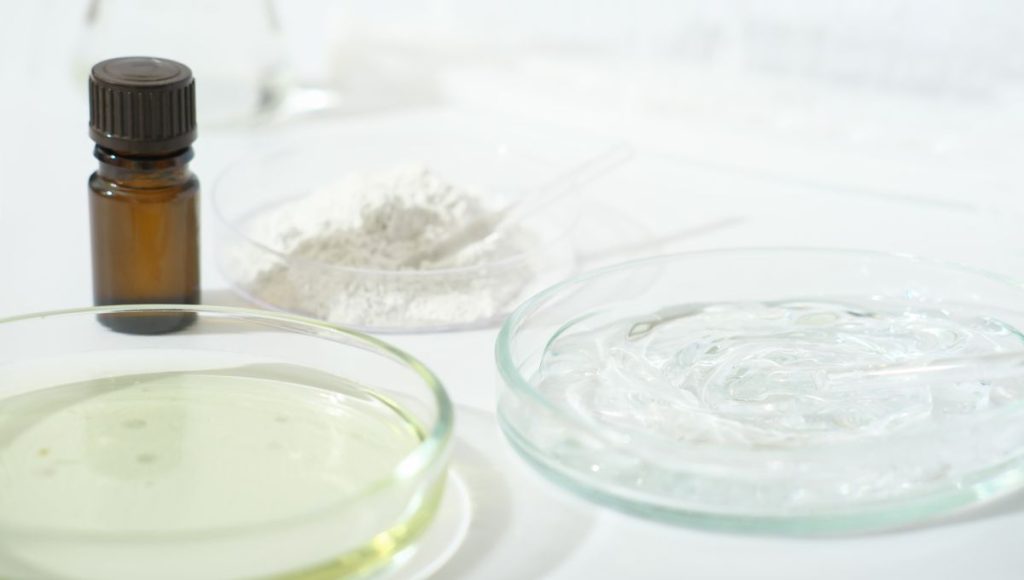
Kojic Acid sounds intense — but it’s born from fermented fungi!
A gentler alternative to hydroquinone, Kojic Acid interferes with melanin (pigment) production by blocking the tyrosinase enzyme. It doesn’t bleach your skin — it simply reduces overproduction.
The Best Kojic Acid-Infused Products to Lighten Acne Scars
Want to build a full arsenal? Combine:
- Nasola Kojic Acid Cream: Moisturizing brightener
- Nasola Kojic Acid Serum: Fast-absorbing, oily-skin favorite
- Nasola Kojic Acid Tea Tree Skincare Bio Oil: Deep repair go-to
Mix and match based on your daily needs.
How to Use Kojic Acid Safely and Effectively
Start slow — once daily, evening use.
Then build up to twice-daily application as tolerated. Always do a patch test.
- Don’t layer too many actives.
- Apply sunscreen during the day (seriously).
- Avoid broken skin or open acne.
Skin Care Lifestyle Tips to Complement Products and Lighten Acne Scars
What you do outside your routine matters too… a lot. Skin is an organ — it reflects hydration, stress, diet, sleep, and what you slather on it.
Support your skincare efforts with daily rituals that reinforce recovery.
Diet and Hydration’s Role in Skin Renewal
A collagen-rich diet, healthy fats, antioxidants — your skin LOVES these.
Drink plenty of water (and no, coffee doesn’t count). Incorporate:
- Omega 3-rich fish
- Berries for antioxidants
- Leafy greens for detox
- Zinc and vitamin C supplements
Feed your glow from the inside.
Dangers of Picking Acne and Self-Extraction
Tempting? Yes. Helpful? Never.
Touching or picking pimples spreads bacteria and causes trauma. That trauma = darker, deeper scars that stay longer.
Use Nasola Kojic Acid Serum as a soothing spot treatment instead. Apply product — not pressure.
The less you interfere, the faster you heal.
Bonus: How to Lighten Acne Scars Fast Before an Event

Got a big day coming up? Need that skin to look its best like… yesterday?
You’ve still got time — and tools.
Step-by-Step Short-Term Fix for Acne Scars
- Apply Nasola Kojic Acid Serum morning + night for intense absorption.
- Layer Nasola Dark Spot Corrector Cream over areas with visible marks.
- Avoid heavy makeup that can clog healing skin.
- Exfoliate gently every 3 days to turn over dull cells.
Consistency, not chaos — that’s the secret weapon.
Conclusion
Skin heals. Acne scars fade. But not without the right care.
You don’t need harsh chemicals or invasive treatments to see visible results.
With consistent use of brightening agents like kojic acid, soothing ingredients like tea tree oil, and exfoliating additives like salicylic acid, your path to even skin can be natural — and real.
Products like Nasola Kojic Acid Cream, Nasola Dark Spot Corrector Cream, and Nasola Kojic Acid Serum are formulated to do just that — moisturize, brighten, and renew.
Give yourself grace. Give your skin time. But don’t forget to give it what it needs to thrive.
Frequently Asked Questions
It usually takes 4–8 weeks of consistent use to see visible results with Kojic Acid, depending on your skin’s condition and how dark the scars are. For some, improvements appear in even less time.
Yes, the Nasola Kojic Acid Cream is designed for daily use. It’s gentle enough for sensitive skin and can be applied morning and night, especially on areas prone to hyperpigmentation.
Both have unique strengths. Nasola Kojic Acid Serum is ideal for oily or acne-sensitive skin because it absorbs quickly. Nasola Dark Spot Corrector Cream delivers hydration benefits for drier skin types.
Yes. Products with kojic acid, like Nasola Kojic Acid Cream, can fade hyperpigmentation without bleaching melanin. Always pair with SPF to avoid further darkening.
In balanced concentrations, yes! Ingredients like salicylic acid in Nasola Kojic Acid Tea Tree Skincare Bio Oil with Salicylic Acid can be used daily to support exfoliation without overly drying out the skin.
Absolutely. Layering Nasola Kojic Acid Cream with Nasola Kojic Acid Tea Tree Skincare Bio Oil tackles both textural and pigment issues caused by cystic breakouts.
Yes, 100%. Nighttime treatment makes skin extra sensitive to sun — so daytime SPF is critical, even if you treat after dark.

